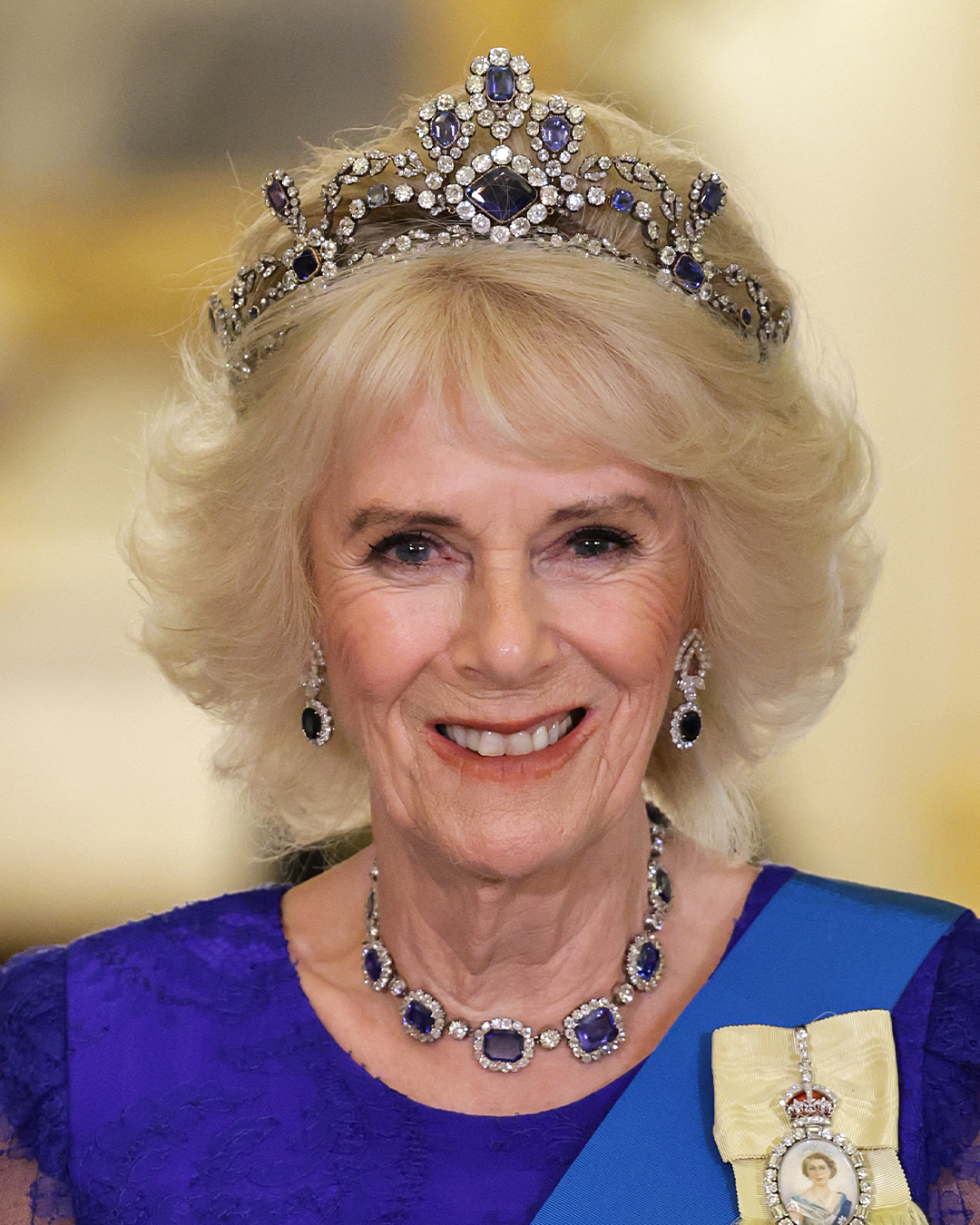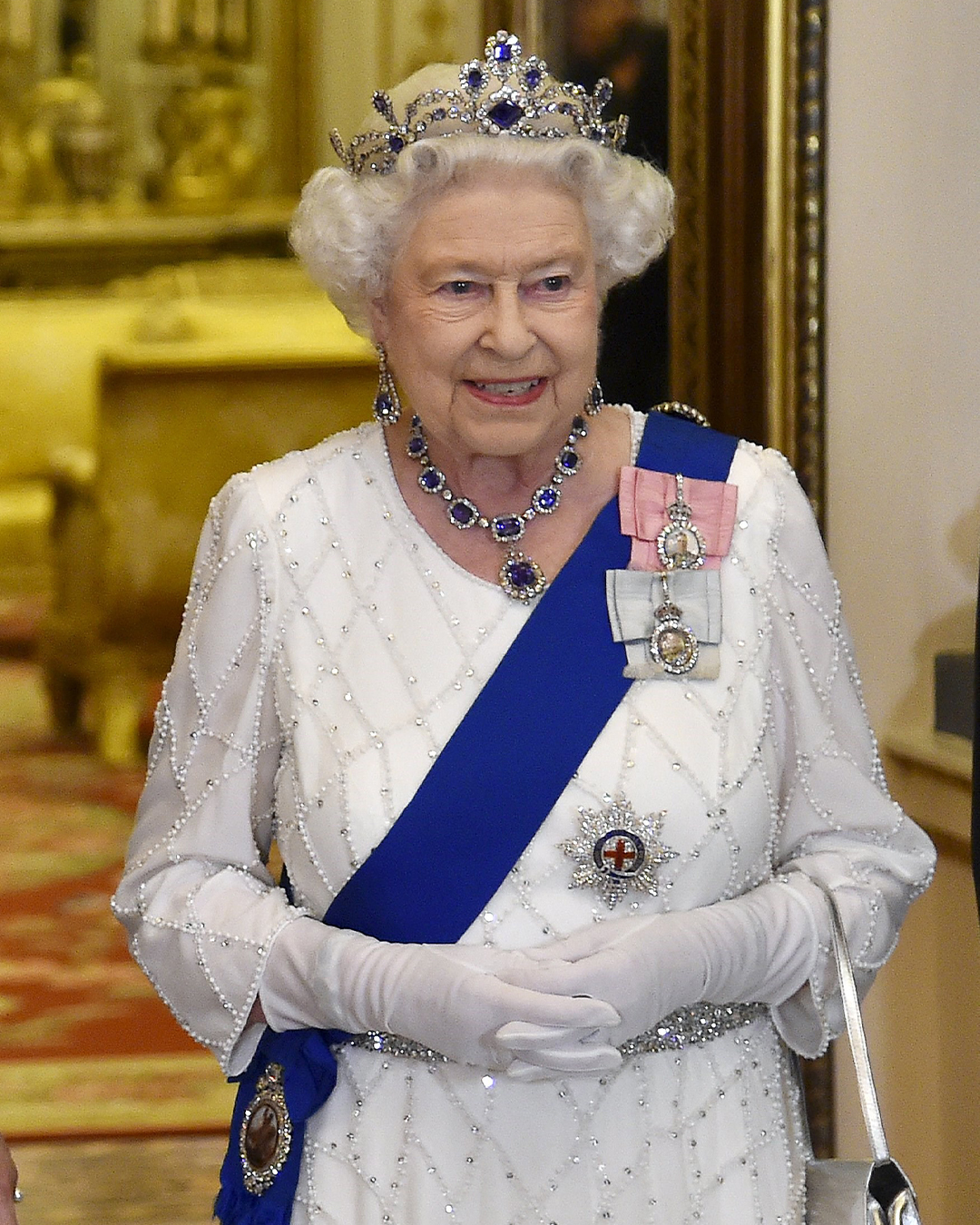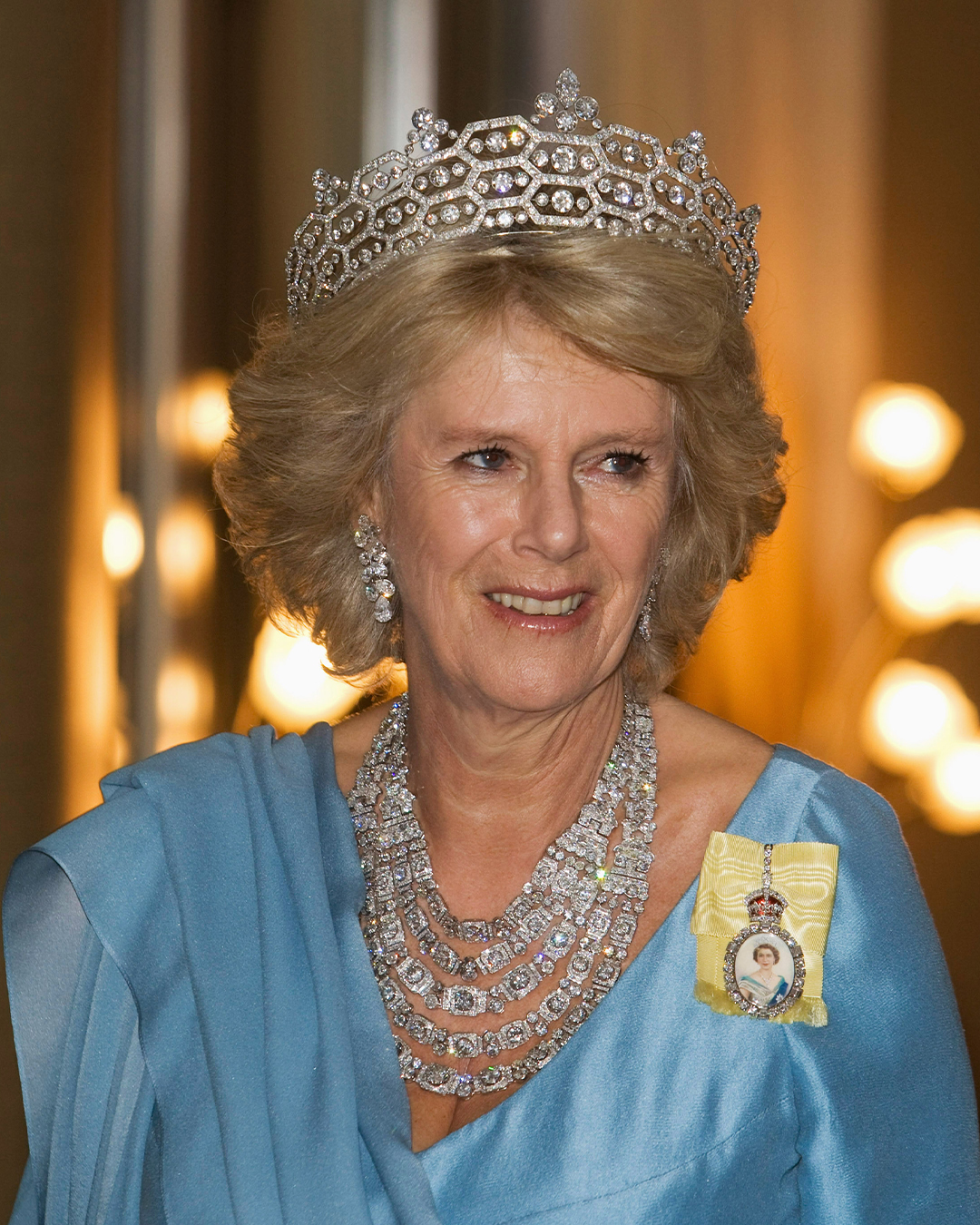The Glorious Jewels of Camilla, The Queen Consort

When the Duchess of Cornwall became Queen Consort on 9th September 2022, following the death of Her late Majesty, she inherited the largest collection of jewelry in the world—often surmised to be worth in the region of $120 million (£100 million).
Since her wedding to Prince Charles in 2005, the Queen Consort has worn a plethora of prominent pieces; many of which once belonged to the Queen Mother, whilst many others are either her own family pieces or presents from her husband. At the time of their marriage, several ‘royal experts’ envisaged that she would wear understated pieces. Far from it! In one of her first state visits, to Uganda in 2007, the then Duchess of Cornwall wore the Greville diamond parure, possibly the most ornate and intricate of all. Subsequently, we have become used to seeing her wearing the fabulous Greville Diamond Tiara, officially the largest diadem in the collection, (more of which below); but it was a more sentimental parure that she chose for the King and Queen’s first home State Banquet in November 2022.
The George VI Victorian Suite


For the South African State Banquet, the Queen Consort wore an exceptional parure of diamonds and sapphires, which has as its sobriquet, the George VI Victorian Suite, of which the tiara is called The Belgian Sapphire. Here is the history of this very significant, set of jewels.
In 1944 for her 18th birthday, King George VI gave his daughter, a sapphire and diamond bracelet. It was one of the first pieces of ‘grown-up’ jewelry that the future queen received. As Suzy Menkes mentioned in her book “The Royal Jewels”, because of WWII the future queen came late to wearing the jewels that she would inherit from her grandmother, Queen Mary, who so loved jewelry that she created an encyclopedia of them.
On Elizabeth’s marriage to Philip in 1947, George VI gave his daughter an exceptional set of Victorian sapphires and diamonds to match the sapphire bracelet. According to the jewelry historian, Leslie Field, the sapphires were from the 1850s and therefore the diamonds were most likely Brazilian, having been set in the demi-parure before 1867, the year the Eureka diamond was found in South Africa. The George VI Victorian Suite was first seen in 1949 and then again in 1951 during a royal tour of Canada. In 1952, Her Majesty had the necklace shortened by removing the largest sapphire, which in 1959 she had created into a sapphire pendant, more often worn as a brooch.
Now to the sumptuous sapphire and diamond tiara; this was, unusually, purchased by the late Queen in 1963 to create a full parure with the jewels given to her by her parents; it is called the Belgian Sapphire Tiara because its provenance began with Princess Louise of Belgium. This 19th-century princess had a slightly scandalous life; after having two children, she left her husband for a Croatian Count and was expelled from royal life. However, by 1907 and living as a divorcée with Conte Geza, she had surmounted debts of 250,000 marks (German Empire currency until 1914) so the jewelry she inherited from her mother, Queen Marie Henriette, was confiscated by her creditors and sold. What we now know as a tiara, was originally a necklace, but when bought by Her Majesty in 1963; it was converted into a tiara, probably by then Crown Jewellers: Garrard. Queen Elizabeth II wore the full parure countless times, and it is a joy to see the Queen Consort continue this spectacular sporting of sapphires and diamonds.
The Greville Diamond Suite

As I explained above, we had become used to seeing the then Duchess in the Greville Diamond Tiara, which is perhaps one of the most impressive and extravagant of all pieces loaned to her by the Queen. It is part of sixty or more pieces bequeathed to the Queen Mother in 1942 by a loyal friend of Queen Mary’s, Dame Margaret Greville. The tiara, also known as the Boucheron Honeycomb Tiara, was created by Boucheron in 1921 using diamonds from a 1901 tiara, created by the iconic Parisian jeweler. The tiara is constructed around a geometrical honeycomb pattern, pavé-set with diamonds, and surrounded by a millegrain setting in platinum, thereby increasing the sparkle so spectacularly; round brilliant diamonds placed within the honeycomb sections, are also bordered by millegrain. In 1953, Cartier increased the height of this already significant piece by rearranging clusters of brilliants on the top layer, as well as adding four round brilliants from one of Her Majesty’s brooches and crowning the piece with a large marquise at the apex.
Also part of the same bequest from Lady Greville is the spectacular Greville Festoon Necklace which the Queen Consort wore for the first time in Uganda, alongside the sumptuous Greville tiara. The diamond necklace by Cartier originally had two rows of plaques set with pavé-set diamonds around central round brilliants and a back-chain of two simple lines of diamonds fastened with a large brilliant also within a pave-set plaque. In 1938 Mrs. Greville commissioned Cartier to add four more plaques and redesign the back clasp, she also commissioned another necklace with three rows of 18 plaques that could be attached to the original necklace to create a fabulous five-row festoon necklace. What a commission!

“In spectacular symmetry to her first State Visit as a member of the Royal Family, Camilla wore the Greville Tiara for her first State Visit as Queen. But instead of the festoon, she paid honour to Her late Majesty by wearing the fabulous Fringe Necklace, given to Princess Elizabeth as a wedding present by the City of London. This piece comprises 56 graduated bars set with a variety of brilliant-cut, cushion-cut and pear-shaped diamonds, interspersed with slim spikes set with graduated brilliant-cut diamonds. The Queen Consort also wore a pair of fringe style earrings set with baguette diamonds. Her Majesty wore the Garter Star and the Royal Family Order of Queen Elizabeth II, alongside the Grand Cross of the Federal Order of Merit, given to her by the German president, Herr Steinmeier, on occasion of the visit to Germany in March 2023.”
Pearl Choker with Diamond Clasp

We have also become accustomed to seeing the Queen Consort wear the pearl choker that was inherited from her mother, Rosalind Cubitt, a granddaughter of Alice Keppel. Camilla cleverly transforms the opulent pearls by alternating the number of strings – sometimes three, sometimes four, and sometimes five; but also the gemstone set clasp to coordinate with whatever dress or suit she is wearing. On their first public outing, the 50th birthday of Camilla’s sister at the Ritz in London – she attached a large step-cut aquamarine nestled amongst gold scrollwork and ten brilliant cut diamonds. Moreover, there is an amethyst and diamond clasp, a garnet, and an Art Deco style clasp set with an enormous cushion cut diamond that belonged to the Queen Mother. However, my favorite is the very pretty pink topaz surrounded by natural diamonds of different cuts. The superb jewel, set as a brooch and matching earrings, was bought at Sotheby’s in 2000 by Prince Charles for over £20,000 and is late Georgian. The then duchess wore the topaz pearl choker and earrings in Pakistan in 2006, and of course – innumerable times since.
Since becoming Queen Consort, she has chosen to pay homage to our beloved late queen by choosing significant pieces for relevant occasions. It is hoped that at the Coronation when she too will be crowned, with Queen Mary’s Crown (set with Cullinans 3 and 4) – she will wear Queen Victoria’s Coronation Necklace and Earrings in honor of Queen Elizabeth II, who wore them for her own in 1953.
Let’s wait and see, but one thing – we won’t be disappointed.
